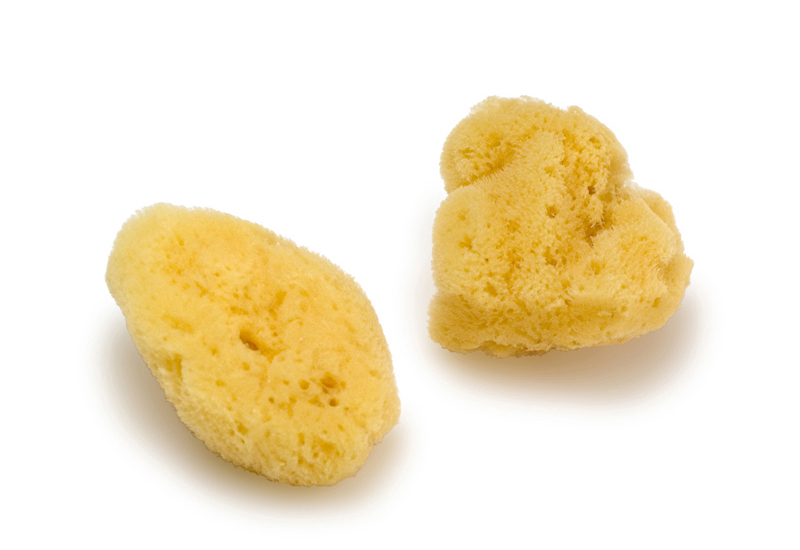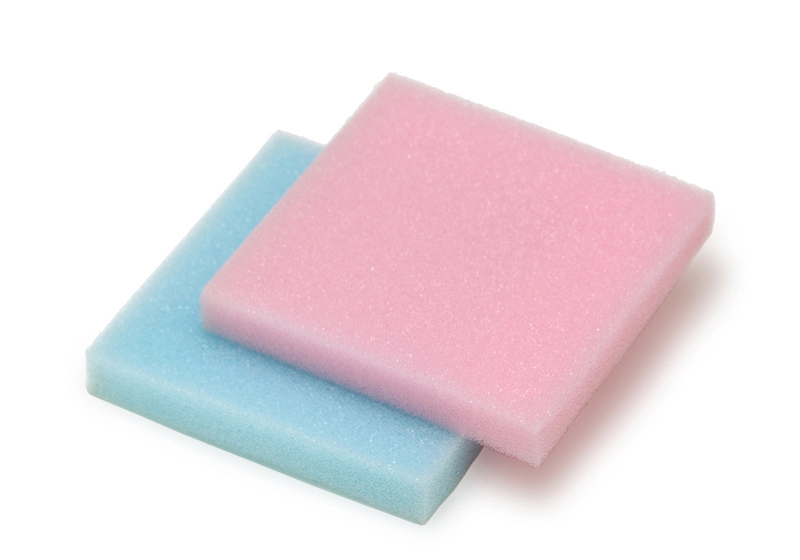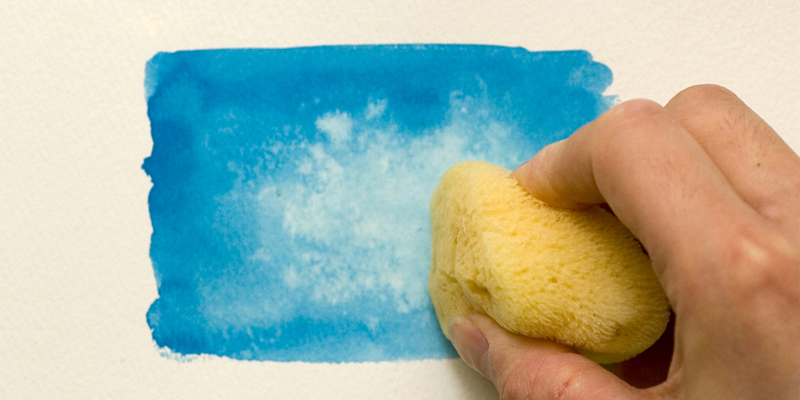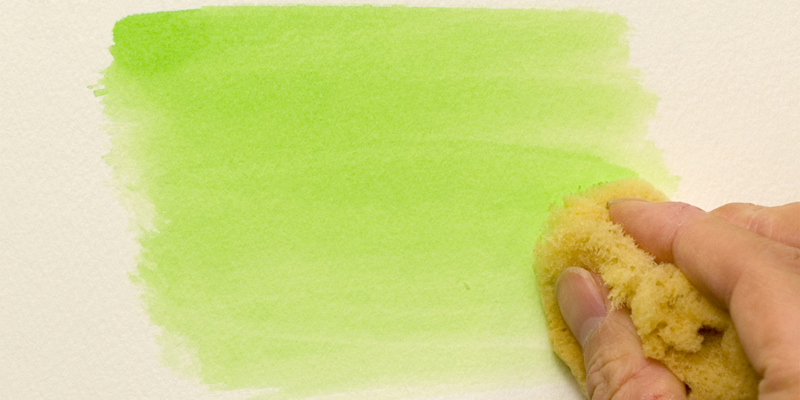Sponge
海綿
Kaimen
Sea sponges are natural sponges mainly used in watercolor painting to adjust the amount of moisture on the brush or the painting, and as a painting implement to create effects that cannot be produced using a brush.
They are aquatic invertebrates and the type used in art comes from spongia officinalis (bath sponge). When dried, the fibrous and porous skeletal structure that is left behind is soft, resilient and very water-absorbent. Being a natural product, sponges come in different shapes and sizes but commercial products are sorted and sold by size. There are also various types depending on whether the surface texture is smooth (silk sponge) or coarse (wool sponge). As an alternative, inexpensive synthetic sponges made from petroleum are also available but they differ greatly in usability, texture and water absorbency.
Sea sponges are often used in a dry state to remove excess paint and moisture from a wet painting, blur the outline of a colored surface and create effects such as bringing out and highlighting the whiteness of the paper or producing color variations. Another use for the sponge is as a painting implement, much like a brush. By dissolving a small amount of paint in plenty of water and soaking the sponge with this solution, a wide surface can easily be colored evenly without leaving traces of brush strokes, via a painting technique known as a “wash”. Loading a dry sponge directly with thick paint and gently patting it onto the surface produces a gritty texture. Erratic lines that cannot be produced using a brush can be drawn by squashing the sponge with your fingers and changing the shape of the sponge.
Do not apply too much pressure when rubbing or patting the sponge against the paper as this could damage or ruffle the surface of the paper. After use, be sure to rinse the sponge thoroughly with water and remove any paint and dirt. Sponges can be purchased at general art stores.
 Sponges
Sponges Artificial sponges
Artificial sponges- Examples (on Watson paper)
 Adjusting the moisture content of a brush tip
Adjusting the moisture content of a brush tip  Removing and blurring color
Removing and blurring color Spreading paint evenly
Spreading paint evenly Achieving pebbled effects
Achieving pebbled effects
